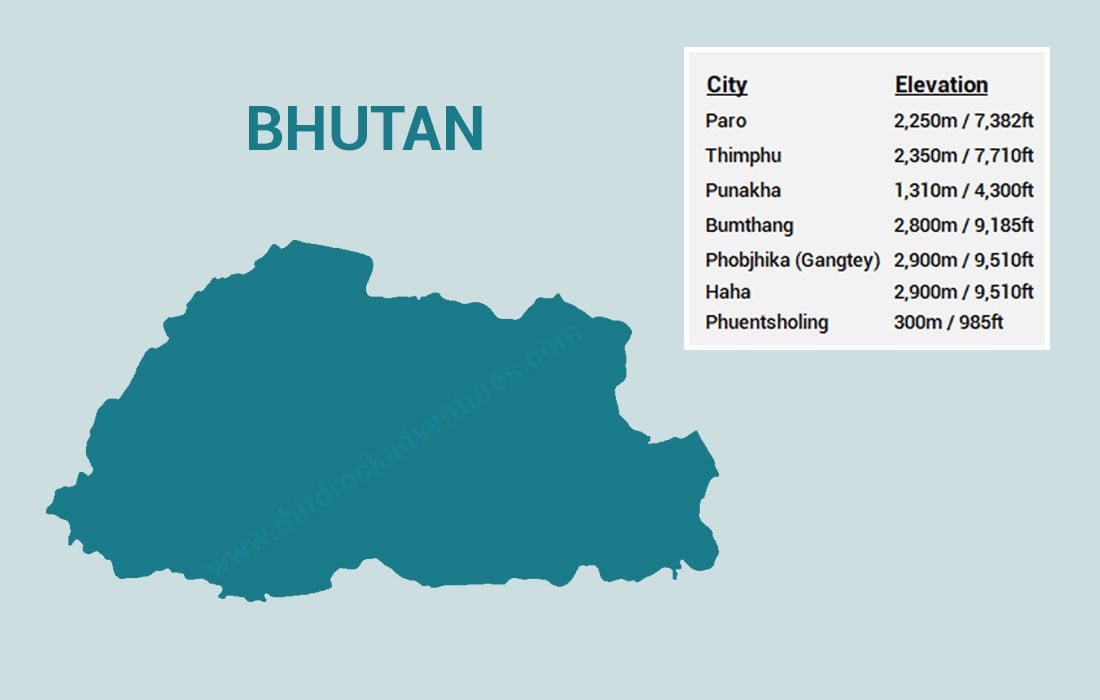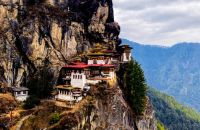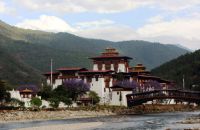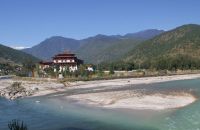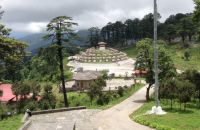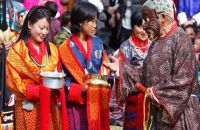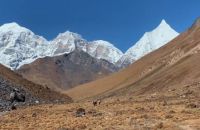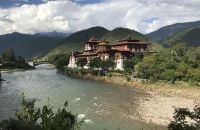Talk with our local travel specialist who can help organize your trip.
Best time to Visit Bhutan - Weather And Seasons
Table of Content
Bhutan is a small landlocked country located deep in the Himalayas. Guarded by the high Himalayan peaks, Bhutan remained isolated from the outside world. It was only in the latter half of the 20th century that the country opened its doors to outsiders.
The country though small, has a very diverse climate. While the northern part of the country covered by high mountains, experiences extreme cold as in the arctic regions, southern Bhutan, bordering the lowlands of India, remains fairly warm.
Western Bhutan and Eastern Bhutan also lie close to the mountains and are much colder than Southern Bhutan. During the Summer months this Himalayan kingdom receives the monsoon rains. Heavy torrential rains and thunderstorms make travelling almost impossible during the monsoon season.
Seasons In Bhutan
According to the country’s climatic conditions the seasons have been divided into four – Spring, Summer, Autumn and Winter. As per the annual tourist arrival data, the most popular seasons are Spring and Autumn. While a huge number of tourists prefer to visit Bhutan during Autumn, Summer sees the least number of visits by tourists. During winter a small percentage of tourists do manage to brave the cold and visit Bhutan.
Spring (March, April, May)
Spring is one of the most favorable seasons to travel to Bhutan. The days are warm and pleasant, the skies remain clear and the nights have just that nip in the air. This is high tourist season and many visitors prefer to plan their holiday to this tiny Himalayan nation during this time.
There are rhododendron and jacaranda blooms and the forests are filled with wildflowers. For those who are interested in bird watching, this is the ideal time to catch some of the endangered and colourful Himalayan birds.
Where to go and what to do in Spring?
Spring is ideal for Bhutan Cultural Tours and outdoor adventures like Hikes to Taktsang Monastery, Wangditse Gompa, Kila Gompa etc., Druk Path Trek, Jomolhari trek, Snowmen’s Trek, white water rafting and mountain biking. Bhutan is known for its vibrant festivals and during Spring some of the colorful Buddhist festivals are celebrated. Some of the not-to-miss Spring festivals are Punakha Drubchen and Punakaha Tsechhu in Punakha, Paro Tsechhu in Paro, Ura Yokchae in Bumthang and Rhododendron Festival in Thimphu.
Summer (June, July, August)
Bhutanese summer is characterized by heavy rainfall and thunderstorms. As the rains make travel difficult, visitors tend to stay away during this season. But if you want to enjoy a holiday devoid of the regular tourist crowd than this is the ideal season to travel.
An added bonus is you will get to enjoy off-season discounts and lower tariffs at most of the tourist establishments. Travel during this season if you want to avoid the crowds and spend less money on your trip. Do remember to pack your waterproof gear and always carry a raincoat or umbrella while enjoying the sights.
The incessant rain lends a different charm to the landscape. The jade green paddy fields and the rain soaked emerald forests covered by the mist will have you reaching out for your phone camera or DSLR to capture the perfect picture.
Where to go and what to do in Summer?
You can visit historical and cultural sites. Stroll around the majestic dzongs (traditional citadels), monasteries and lakhangs (Buddhist temples). Visit local markets in Paro and Thimphu and try local cuisine. Enjoy a homestay in Haa Valley with a local family and learn more about Bhutanese culture. As the trails get slippery due to the rains, trekking should be strictly avoided during this time.
Some of the important summer festivals are Haa Summer Festival in Haa Valley, Kurjey Tsechhu in Bumthang and Mushroom Festival in Thimphu.
Autumn (September, October, November)
Autumn is another popular tourist season in Bhutan. The days are filled with sunlight and the nights are a bit chilly. The sky remains clear and the trekking trails are filled with colorful tented camps, mule trains and horses and eager trekkers. The stunning snow-capped views of Himalayan peaks like Jomolhari, Gangkhar Puensum, Jitchu Drake etc. mesmerize the trekkers. The rice fields turn golden, ready to be harvested. The scenery, with clear blue sky, green hills and frozen white peaks, is breathtaking. As in Spring, visitors flock to this tiny country during this time, taking advantage of the marvelous Fall weather.
Where to go and what to do in Autumn?
During Autumn you can enjoy a multitude of activities. You can hike to remote monasteries like the Tiger’s Nest, Wangditse Gompa and Lungchutse Gompa. You can walk through paddy fields and visit traditional villages or trek though the popular Druk Path Trail.
Explore ancient temples and dzongs like the Punakha Dzong and Paro Dzong. Drive across the high mountain passes Dochula and Chele La. Take a mountain bike or a motorbike ride across the country. Enjoy a traditional hot stone bath and shop for souvenirs at the local markets. You can also participate in a game of Archery or Dha (Bhutan’s national sport one of the most popular outdoor games) with the locals.
Festivals celebrated during Autumn include Thimphu Drubchen and Tsechhu in Thimphu, Wangdue Tsechhu in Wangdue Phodrang, Royal Highland Festival in Gasa, Gangtey Tsechhu at Gangtey, Jambay Lakhang Drup in Bumthang and Black Necked Crane Festival in Gangtey.
Winter (December, January, February)
During Winter, there is snowfall in most parts of Bhutan. The temperatures dip below freezing point and it gets really cold. Visitors tend to stay away and most of the tourist establishments offer off-season discounts. The major tourist sites remain secluded and the service providers are ready to slash their fee.
Like Summer, Winter is one season where you can make huge savings on your trip to Bhutan. You can explore the tourist sites in peace and moreover, pictures of the snow-covered Winter landscape will definitely earn you thousands of likes on social media platforms.
Where to go and what to do in Winter?
As there is snowfall the highways are sometimes blocked. This makes it difficult to travel across Bhutan. You can tour around the heritage sites of Paro, Thimphu and Punakha. Dochula Pass, covered by white snow looks stunning at this time of year. The dzongs and other traditional buildings also seem like structures from a fictional tale.
If you are planning to travel to Bhutan during winter, take care to pack enough warm clothes as it will be freezing. You may want to explore Bhutan as the weather here, unlike the rest of Bhutan, remains pleasant during this season. You can enjoy nature and wildlife tour at the famous Manas National Park and Tsirangtoe Heritage Forest.
Winter festivals include Druk Wangyel Tsechhu in Thimphu, Jambay Lakhang Sinye Cham in Bumthang and Trashigang Tsechhu in Trashigang.
- Written by: Naba Raj Amgai
- Updated: Thursday Jun 28, 2018

